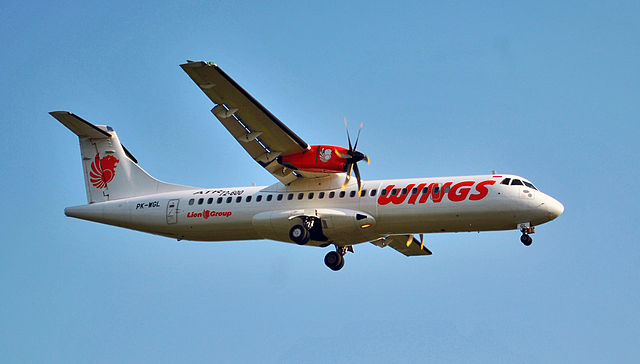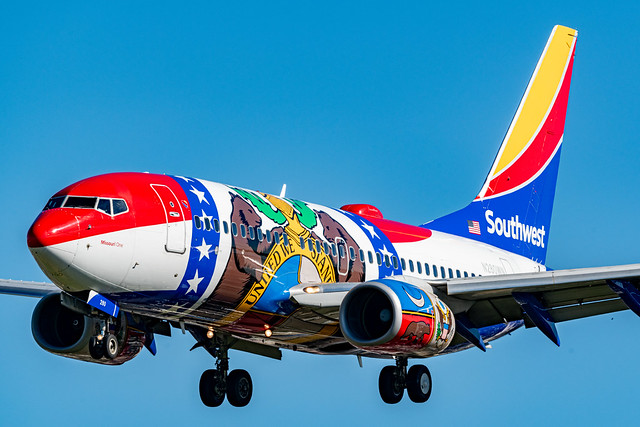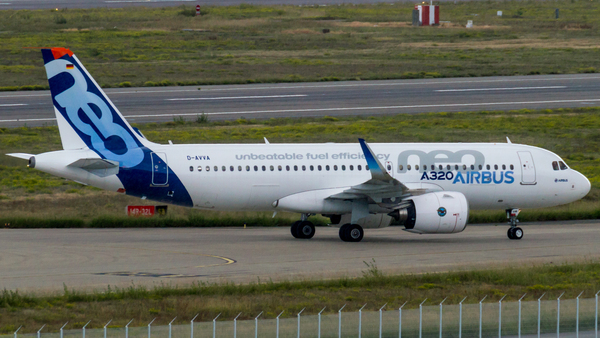Wings AT72 at Ambon on Jul 3rd 2020, failure of all instruments
Last Update: September 14, 2020 / 13:12:26 GMT/Zulu time
Incident Facts
Date of incident
Jul 3, 2020
Classification
Incident
Airline
Wings Air
Flight number
IW-3544
Departure
Ambon, Indonesia
Destination
Babo, Indonesia
Aircraft Registration
PK-WHY
Aircraft Type
ATR ATR-72-200
ICAO Type Designator
AT72
Indonesia's KNKT rated the occurrence a serious incident and opened an investigation. There were no injuries, the aircraft sustained minor damage.
The occurrence aircraft returned to service on Jul 13th 2020.
On Sep 14th 2020 the KNKT released their preliminary report summarizing the sequence of events:
On the third flight Ambon to Babo, on board the flight were two pilots, one flight attendant and 49 passengers. In this flight the Pilot in Command (PIC) (29, ATPL, 5,691 hours total, 5,691 hours on type) acted as Pilot Flying (PF) and the Second in Command (SIC) (27, CPL, 4,152 hours total, none listed on type) acted as Pilot Monitoring (PM).
The starting process of both engines was normal then the aircraft taxied and line up runway 22 of Ambon. At 0400 UTC (1300 LT) the aircraft took off and after airborne the pilot verified the Idle Gate lever engaged. Suddenly all 5 Display Units (DU) and the Integrated Electronic Standby Instrument (IESI) went blank and all of the Very High Frequency (VHF) radios were off. The landing gear could not be selected to up.
The pilot glanced to the overhead panel and saw several lights illuminated consisted of the SHED light on the DC SVCE/UTLY BUS, the AVAIL (available) light on the EXT PWR (external power) push buttons, pack, lavatory detection and engine boost.
The weather during this situation was raining and the ground visibility was 6 km.
The pilot did not have flight instruments as reference for flight, therefore the pilot flew visually.
After about 1 minute, the pilot heard communication on the radio and the DUs were intermittently recovered. The cross marks (X) appeared on the indicator of speed and altitude on DU 1, DU 5 and IESI. The pilot noticed differences of speed about 20 knots and the altitude about 200 feet.
When the aircraft altitude about 3,000 feet the landing gear lever could be selected to up. The engine set from takeoff power to climb power and the pilot continued with performing after takeoff check list including retracted the flap and maintained speed at 170 knots. Few moments later, the cross marks on the speed and altitude indicators disappeared, the AVAIL light, PACK and lavatory detection lights extinguished.
The pilot communicated with the Air Traffic Controller Officer (ATCo) and requested to climb to altitude 4,000 feet and to hold at point AUDRI for problem identification. After made 3 holding patterns at point AUDRI and considering the flight instruments condition had been recovered, the pilot decided to return to Ambon and requested to the ATCo for landing clearance. The ATCo provided instruction for landing approach and informed that the visibility was 4 km.
The aircraft performed landing approach followed the Instrument Landing System (ILS) procedure. At aircraft altitude about 1,000 feet the visibility degraded to 800 meters and the pilot decided to go around as the visibility below minima for landing.
The ATCo vectored the pilot to return to point AUDRI and instructed to climb 7,000 feet due to two aircraft were holding at point AUDRI. The pilot held at point AUDRI for about 90 minutes waited for weather improvement.
After the weather had improved, one of the aircraft started to make approach and landing and the pilot was instructed by the ATCo to descend to 5,000 feet. During holding at point AUDRI, the Enhanced Ground Proximity Warning System (EGPWS) warning “TERRAIN AHEAD, PULLED UP” activated. The pilot aware that there was no terrain around point AUDRI as it was located over the sea and the visual condition showed no terrain near the aircraft and the pilot ignored the warning.
As instructed by the ATCo, the pilot made holding at point AUDRI for about 20 minutes at altitude about 5,000 feet due to another aircraft that was holding at 4,000 feet.
When the visibility had improved to 5 km, after landing clearance available the aircraft approached and landed safely at 0600 UTC. No one injured in this occurrence and no further damage to the aircraft.
The KNKT reported the aircraft had been manufacturer on Aug 4th 2017 and had accumulated 5,460 hours in 6,165 cycles.
Incident Facts
Date of incident
Jul 3, 2020
Classification
Incident
Airline
Wings Air
Flight number
IW-3544
Departure
Ambon, Indonesia
Destination
Babo, Indonesia
Aircraft Registration
PK-WHY
Aircraft Type
ATR ATR-72-200
ICAO Type Designator
AT72
This article is published under license from Avherald.com. © of text by Avherald.com.
Article source
You can read 2 more free articles without a subscription.
Subscribe now and continue reading without any limits!
Read unlimited articles and receive our daily update briefing. Gain better insights into what is happening in commercial aviation safety.
Send tip
Support AeroInside by sending a small tip amount.
Related articles
Wings AT72 at Dekai on Feb 17th 2024, aircraft being shot at
A Wings Air Avions de Transport Regional ATR-72-212A, registration PK-WJT performing flight IW-1646 from Jayapura to Dekai (Indonesia) with 36 people…
Wings AT72 at Denpasar on Aug 3rd 2022, flight controls, engine vibrating
A Wings Air Avions de Transport Regional ATR-72-212A, registration PK-WGL performing flight IW2832 from Denpasar to Tambolaka (Indonesia), was…
Wings AT72 at Sintang on Jun 19th 2018, landed at wrong airport
A Wings Air Avions de Transport Regional ATR-72-212A, registration PK-WHF performing flight IW-1370 from Pontianak to Sintang Tebelian (Indonesia),…
Wings Abadi AT72 at Ujung Pandang on Oct 3rd 2020, all display units off on approach, cabin doors could not be opened, smoke in cabin
A Wings Abadi Avions de Transport Regional ATR-72-212A, registration PK-WGT performing flight IW-1327 from Raha to Ujung Pandang (Indonesia), was…
Wings Abadi AT72 at Surabaya on Jun 11th 2014, aircraft being "hammered" during landing roll
A Wings Abadi Airlines Avions de Transport Regional ATR-72-212A, registration PK-WGK performing flight IW-1861 from Lombok to Surabaya (Indonesia)…
Newest articles
Southwest B737 at Cleveland on Oct 29th 2025, loss of separation with helicopter
A Southwest Airlines Boeing 737-700, registration N280WN performing flight WN-1333 from Baltimore,MD to Cleveland,OH (USA), was on final approach to…
Frontier A20N at New York on Oct 30th 2025, fuel leak, engine shut down in flight
A Frontier Airlines Airbus A320-200N, registration N394FR performing flight F9-3546 from San Juan (Puerto Rico) to New York JFK,NY (USA) with 152…
Subscribe today
Are you researching aviation incidents? Get access to AeroInside Insights, unlimited read access and receive the daily newsletter.
Pick your plan and subscribePartner

ELITE Simulation Solutions is a leading global provider of Flight Simulation Training Devices, IFR training software as well as flight controls and related services. Find out more.
SafetyScan Pro provides streamlined access to thousands of aviation accident reports. Tailored for your safety management efforts. Book your demo today
AeroInside Blog
Popular aircraft
Airbus A320Boeing 737-800
Boeing 737-800 MAX
Popular airlines
American AirlinesUnited
Delta
Air Canada
Lufthansa
British Airways



